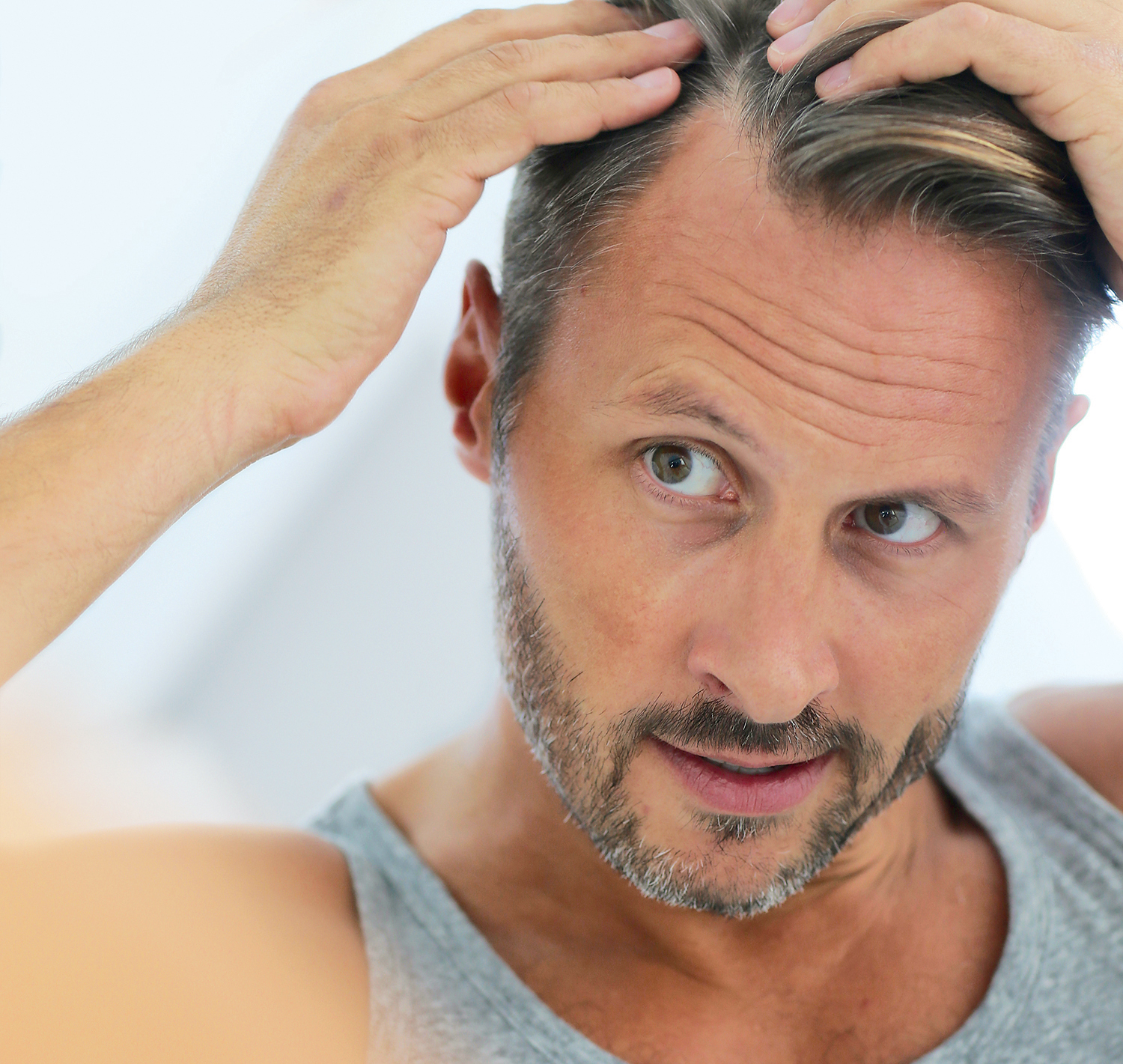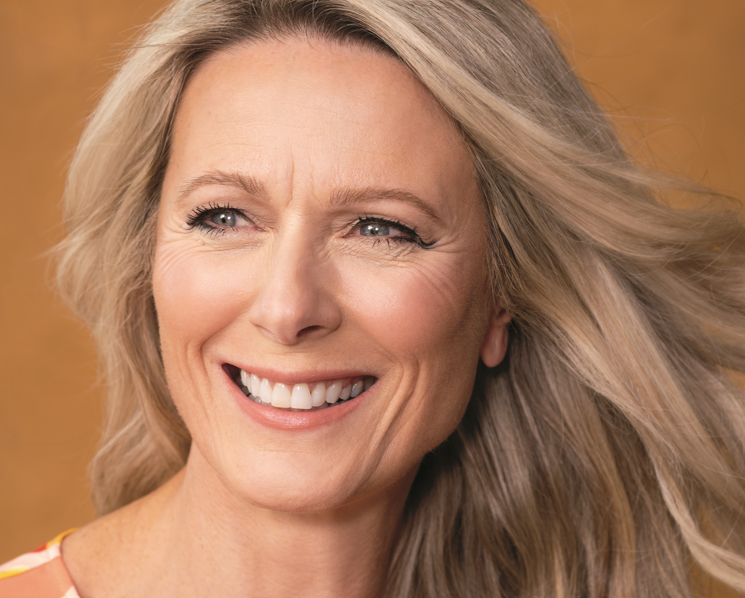Sure, men worry about it, but they aren’t alone
By Emmanuelle Plante and Lola Augustine Brown
Any stylist will tell you that hair loss is the No. 1 concern of the men in their chairs. Losing your hair can lead to a loss in self-confidence. But you’re not powerless to stop the drop.
While going bald can be a depressing notion to consider, thinning hair isn’t always a sign that you’re on your way to having none at all, and there are ways to arrest the situation. Here’s the lowdown on what causes hair loss and some solutions that could help you get that self-confidence back.
Why Me?
You can take some comfort from the fact that hair loss is very common, and it affects both men and women. As the stats go, one in three men has experienced hair loss by the time he hits 30; by age 50, half of men are affected, and by 70, that number hits 80 per cent—40 per cent among women.
Many of us can blame it on our parents, or our parents’ parents, as both male-pattern baldness and female-pattern baldness run in families. These types of baldness are results of a sensitivity to testosterone, or rather to a derivative of testosterone called dihydrotestosterone, or DHT, which leads to having finer hair that thins early and ultimately falls out.
Gilles Daure, brand director of René Furterer hair-care products, says that there is also a vascular cause, that the hair can starve without enough nutrients being delivered through circulation.
“Excess sebum can also be a problem,” he says. “The hair is protected from external contact by sebum, but if we secrete too much, it will come down the hair follicle and into the root. The hair follicle can also become strangled as the skin loses collagen and elastin, becoming too rigid.”
Other factors that cause hair loss include stress, taking certain medications, protein and iron deficiencies, and underlying hormonal issues. Chemotherapy is, of course, one well-known treatment that causes the hair to fall out, at least for the duration of treatment.
Finding out which cause is the root of your problem isn’t always easy, but luckily you don’t really have to know to start treating the problem, as many treatments are the same no matter the cause.
Prescribed Treatments
When it comes to the genetic type of hair loss, early intervention is your best line of defence. Protecting what you have is easier than growing new hair, and a trip to your dermatologist is a good way to kick off any plan of action.
A dermatologist will be able to examine your scalp and help determine any underlying causes. He or she may also be able to offer you prescription medication, such as Propecia, which blocks that pesky hormone DHT and is often used in conjunction with a topical treatment such as Rogaine. These treatments can be very effective, though you have to use them religiously every single day for them to work.
If you’re considering prescription medications, it’s essential to discuss side effects with your doctor. Loss of libido is a common side effect, and you may decide that keeping your mojo is more important than keeping your hair.
If some kind of deficiency is behind your hair loss, the fix may be as simple as ensuring that you start getting into your diet whatever it is you’re missing. Look at what you are eating and whether you are properly taking care of yourself. At the very least, you should make sure that you are taking a multivitamin, and perhaps a zinc supplement, as this is known to promote good circulation. Living healthy, eating well, and drinking plenty of water will prove helpful, too. Again, this is all something that a qualified medical professional can advise you on.
Losing hair due to stress or shock, or because you are taking certain medications, can be less of a big deal in the long run (though, of course, it feels like a problem at the time). Often you’re able to grow hair back once you’ve sorted out those issues in your life, and talking to your stylist about the best way to handle fragile hair is going to help you deal with that. Your stylist may also have a few suggestions as to how you can help stimulate growth through massage and the use of certain products.
Searching Out Alternatives
A variety of over-the-counter products have been developed to promote the health of the scalp with the goal of keeping the hair you have. For example, there are products from René Furterer that use essential oils to stimulate the scalp and hair follicle, and plant hormones to help increase collagen and elastin production, which will help maintain the health of the follicle and stimulate hair growth.
“These products are usually applied as a treatment for several months, at the first sign of hair loss,” Daure says.
There are also clinics that offer laser treatments to help slow down hair loss.
“Bio-stimulation gives very good results,” says Marilyne Gagné, founder and president of Dermapure clinics. Low-intensity lasers are used to stimulate the scalp painlessly, which both hinders hair loss and stimulates growth, Gagné says. Treatment requires 48 sessions, two or three times a week. However, Gagné warns, if your scalp is already smooth, it won’t work. “If follicles are definitely dead, a hair transplant becomes the only option.”
Acupuncture has shown good results for some people, and some natural supplements and therapies have shown promise, as well, so you can seek out help from your local health food store, too.
Work With What You Have
With all this information in mind, take solace in the fact that there is much less stigma in going bald these days than there used to be. Shaved heads are considered sexy, and many men with thinning hair are considered heartthrobs. Action stars Jason Statham and Bruce Willis sport a close shave, while the likes of Chris Martin of the band Coldplay and Jude Law have short and neat styles that flatter them perfectly.
If you’re a Pinterest user, just search for “Thinning hairstyles for men” and you’ll see page after page of great-looking guys sporting fine hair with panache. What’s important is to accept the hair that you have now instead of pining for the hair you once had and to find a style that works for you and makes you look fantastic, even if you’re treating your hair loss at the same time.
Photo: Dreamstime/Goodluz.





